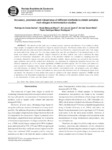Use este identificador para citar ou linkar para este item:
http://www.alice.cnptia.embrapa.br/alice/handle/doc/952505Registro completo de metadados
| Campo DC | Valor | Idioma |
|---|---|---|
| dc.contributor.author | GOMES, R. da C. | pt_BR |
| dc.contributor.author | MEYER, P. M. | pt_BR |
| dc.contributor.author | CASTRO, A. L. de | pt_BR |
| dc.contributor.author | NETTO, A. S. | pt_BR |
| dc.contributor.author | RODRIGUES, P. H. M. | pt_BR |
| dc.date.accessioned | 2013-03-07T11:11:11Z | pt_BR |
| dc.date.available | 2013-03-07T11:11:11Z | pt_BR |
| dc.date.created | 2013-03-07 | pt_BR |
| dc.date.issued | 2012 | pt_BR |
| dc.identifier.citation | Revista Brasileira de Zootecnia, v.41, n.6, p.1369-1377, 2012. | pt_BR |
| dc.identifier.uri | http://www.alice.cnptia.embrapa.br/alice/handle/doc/952505 | pt_BR |
| dc.description | The objective of this study was to evaluate accuracy, precision and robustness of two methods to obtain silage samples, in comparison with extraction of liquor by manual screw-press. Wet brewery residue alone or combined with soybean hulls and citrus pulp were ensiled in laboratory silos. Liquor was extracted by a manual screw-press and a 2-mL aliquot was fixed with 0.4 mL formic acid. Two 10-g silage samples from each silo were diluted in 20 mL deionized water or 17% formic acid solution (alternative methods). Aliquots obtained by the three methods were used to determine the silage contents of fermentation end-products. The accuracy of the alternative methods was evaluated by comparing mean bias of estimates obtained by manual screw-press and by alternative methods, whereas precision was assessed by the root mean square prediction error and the residual error. Robustness was determined by studying the interaction between bias and chemical components, pH, in vitro dry matter digestibility (IVDMD) and buffer capacity. The 17% formic acid method was more accurate for estimating acetic, butyric and lactic acids, although it resulted in low overestimates of propionic acid and underestimates of ethanol. The deionized water method overestimated acetic and propionic acids and slightly underestimated ethanol. The 17% formic acid method was more precise than deionized water for estimating all organic acids and ethanol. The robustness of each method with respect to variation in the silage chemical composition, IVDMD and pH is dependent on the fermentation end-product at evaluation. The robustness of the alternative methods seems to be critical at the determination of lactic acid and ethanol contents. | pt_BR |
| dc.language.iso | eng | eng |
| dc.rights | openAccess | eng |
| dc.title | Accuracy, precision and robustness of different methods to obtain samples from silages in fermentation studies. | pt_BR |
| dc.type | Artigo de periódico | pt_BR |
| dc.date.updated | 2013-03-07T11:11:11Z | pt_BR |
| dc.subject.thesagro | Silagem | pt_BR |
| riaa.ainfo.id | 952505 | pt_BR |
| riaa.ainfo.lastupdate | 2013-03-07 | pt_BR |
| dc.contributor.institution | RODRIGO DA COSTA GOMES, CNPGC; Paula Marques Meyer, IBGE; Ari Luiz de Castro, Departamento de Nutrição e Produção Animal, FMVZ/USP.; Arlindo Saran Netto, Departamento de Zootecnia, FZEA/USP; Paulo Henrique Mazza Rodrigues, Departamento de Nutrição e Produção Animal, FMVZ/USP. | pt_BR |
| Aparece nas coleções: | Artigo em periódico indexado (CNPGC)  | |
Arquivos associados a este item:
| Arquivo | Descrição | Tamanho | Formato | |
|---|---|---|---|---|
| 0000007017Gomesetal2012RBZ.pdf | 61.03 kB | Adobe PDF |  Visualizar/Abrir |









